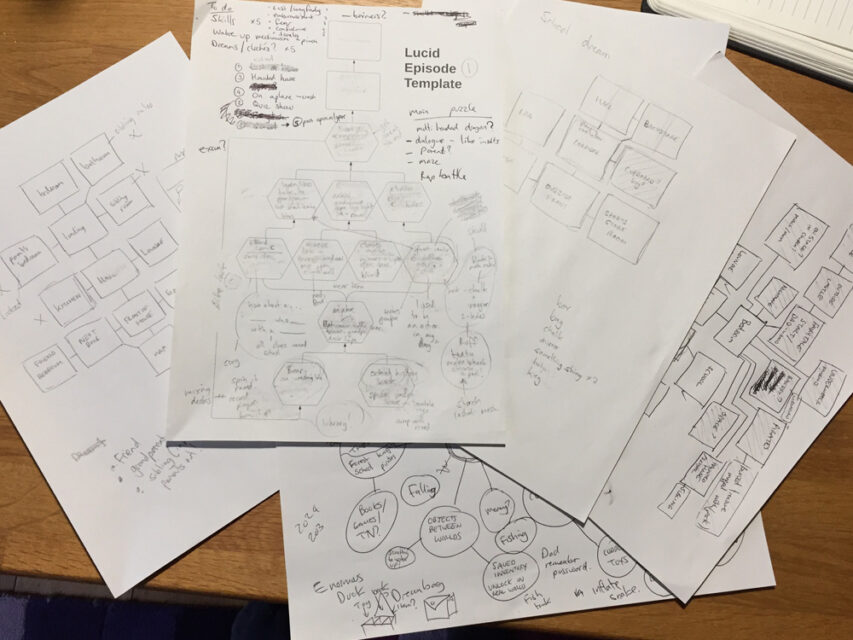Making a start

This week I have finally started making actual “things” for the demo. Booting up Photoshop to get started on the pixel art for the first couple of scenes, getting them loaded into Visionaire and starting to get some of the rudimentary actions and dialogue linked up.
I love an organic process for creating a game.
I have the basic structure in place in my brain. I know where I’m starting from, where I’m going to and the milestones that need to be hit along the way in terms of the key points in the narrative and the puzzles that make it possible. There’s a big upside down tree of gameplay, and I’m beginning to crawl along the very first branch…of the tree…which is upside down. ¬_¬
Anyway.
Everyone seems to tackle game development differently. Some like to plan everything out to the letter before even putting pen to paper. I have seen some in-depth analysis on the theory of puzzle necessity, and I can absolutely see the merit of that approach.
For me though, if I’m not able to start literally piecing something together as I go along, I start to lose my way in the mire of mind maps, diagrams and puzzle theory. Overall, the story narrative is paramount to me, and the puzzles are a means to an end.
I find that an inverted tree-like structure to the puzzles helps me to group different parts of the story together. The end goal is the ultimate puzzle, this will have necessitated the completion of a series of secondary puzzles, which in turn have all necessitated a series of tertiary puzzles etc. etc. down the tree we go (or is it up the tree?).




For the initial demo of my game I have all of these puzzles loosely mapped out. This then allowed me to put together a list of the essential characters, scenes and objects required for each part of the story. At this stage I quickly realised that I already knew what all of the scenes looked like as I saw them in my head whilst writing out the puzzles.
Although this map contains all of the crucial puzzles, it doesn’t contain the little funny quirks and mini-puzzles which make a point and click game worth playing. The little “wins” along the way that reward a player for not only succeeding, but also for simply exploring. This leaves me a lot of creative freedom to build as I play. I am constantly previewing the game and seeing what draws my eye. What do I instinctively try to do, and expect to happen? This method gives me ideas for the game that I could never have thought of on paper.
So I’m starting at the beginning. Scene One. I’m drawing out the picture in my head, and adding any bits and pieces that take my fancy as I go along.
I’ve even consulted my five year old son as to what objects could be included. Hence why there is a venus fly trap and a piranha in a tank. I have not accepted all of his contributions, but he’s a pretty good engine for generating bizarre scenery ideas.
Back to blog